Proton beam therapy technology can broadly be broken down into the following components:
Cyclotron
The cyclotron is an accelerating device that takes protons stripped from hydrogen gas and accelerates them to approximately 2/3 speed of light. It uses static magnets and Radio Frequency (RF) to accelerate the proton outwards from the centre of the cyclotron in a circular fashion. The proton gains more speed and more energy as it moves further away the centre.
Then extraction magnets pull the protons out of the cyclotron into the beamline. The energy of the extracted proton is a consistent 230 MeV.

Energy Selection System (ESS)
Once the proton beam has left the cyclotron, it will encounter the Energy selection system (ESS).
The ESS is used to change the energy of the proton beam to align with the depth of the tumour within the patient’s body.
The energies range from 70Mev to 230MeV. The ESS is made up of mechanical carbon wedges that are driven into the proton beam. The ESS will start with the highest energy and treat the most distant layer of the tumour first. Then the energy of the beam is lowered and the closer layers of the tumour are treated. The process continues until the whole tumour is painted with protons.
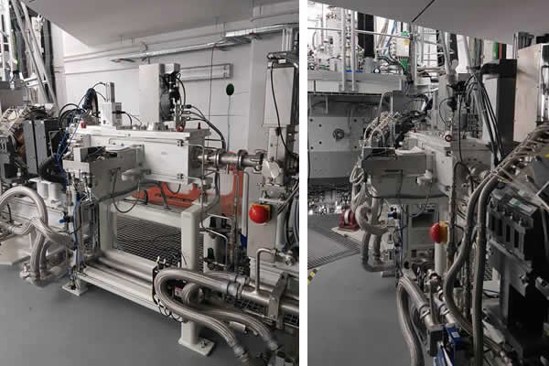
Beam Line
After leaving the ESS, the proton beam will travel down the beam line. The beam line is the link between the cyclotron and each treatment gantry.
Traveling down the beamline the proton beam will come under the forces of two different electromagnets.
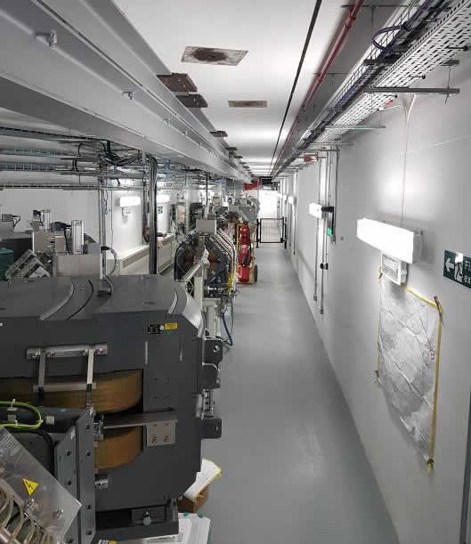
Quadrapole electromagnet
The first is the quadrapole electromagnet. This magnet is used to focus the proton beam into pencil width shapes and prevents the beam spreading outwards. The number of quadrapole magnets used is dependent on the length of the beam line.
The pictures show that the beam pipe passes through the centre of each quadrapole electromagnet. The electromagnets are cooled using a water cooling system. If the magnets are not cooled, the magnets would change size physically and the focusing of the beam would be sub-optimal.
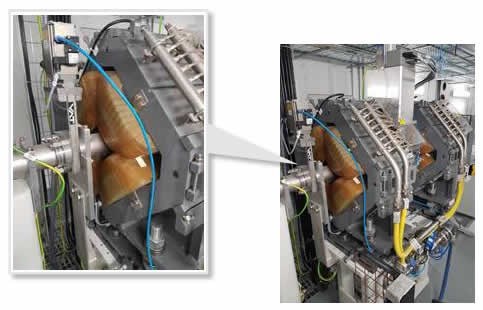
Dipole electromagnets
The second type of electromagnet is the Dipole. These electromagnets are switched on to direct the proton beam into each gantry room. The largest of these magnets on the Varian system is the 135 degree magnet that weighs approximately 20 tonnes.
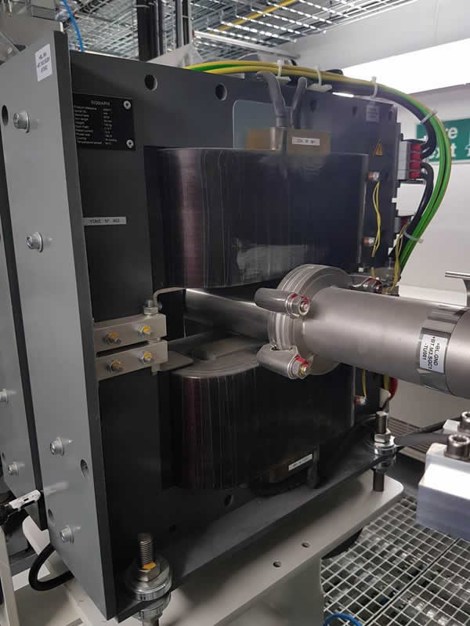
Nozzle
Once the proton beam is directed into the gantry room, the protons will encounter the nozzle.
The nozzle has many features.
It has the ability of deflect the proton beam in two planes to allow painting of the tumour at different depths. This means the proton beam spot can be moved so different areas of a tumour can be treated accurately.
The nozzle has the ability to measure the proton beam and feedback to the treatment system to ensure accurate delivery.
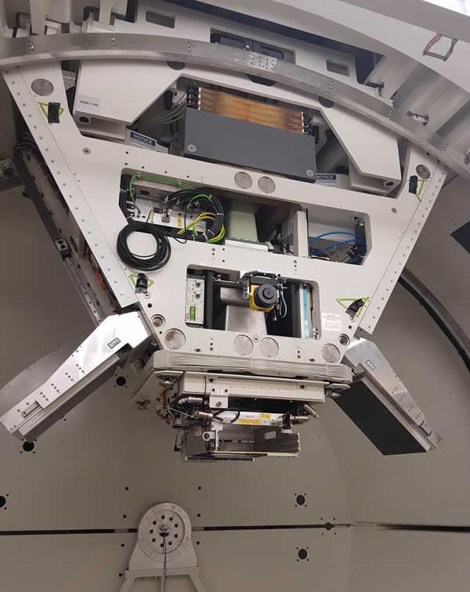
The nozzle also has imaging panels attached to it. These are used to detect exit dose from the patient to form an image. The ProBeam system uses 2D Kv and 3D CBCT (Cone Beam CT) imaging to verify the position of the patient to ensure accurate treatment delivery. The picture below shows the nozzle components during installation.
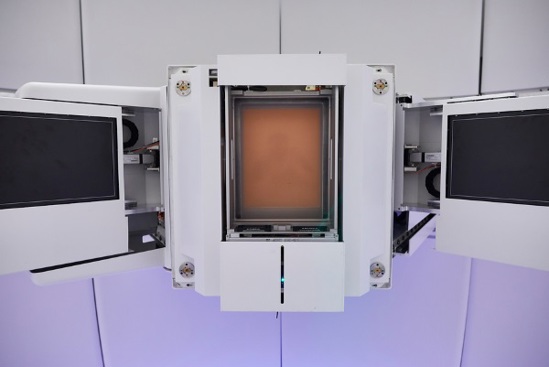
Gantry
The gantry is a large circular component, which contains the treatment delivery system. The gantry will rotate 360 degrees around a patient to ensure the best beam angle for treatment. The patient will be lying on a table top attached to the robotic arm throughout treatment delivery.
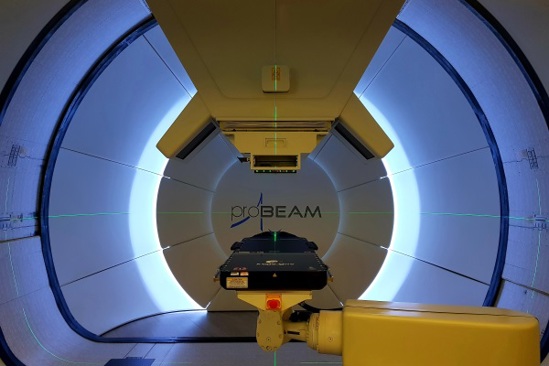
Patient Support System
To ensure accurate positioning of the patient for treatment, we can use the robotic couch in conjunction with ProBeam imaging software. The patient would lie on this couch underneath the treatment gantry once set up for treatment.
The robotic couch has a carbon fibre table top which allows six degrees of freedom. The bed allows corrections in all three spatial dimensions as well as the corresponding rotational axes. Different table tops can be added to the robotic couch to suit different areas of the body being treated.
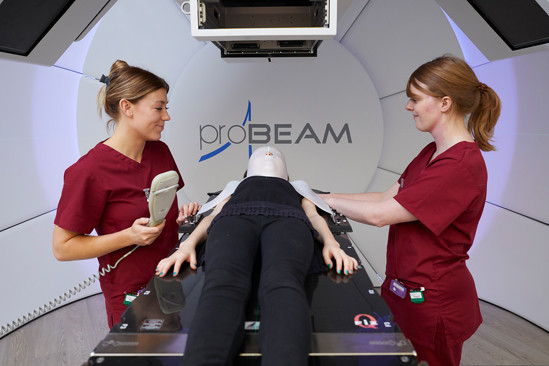
Imaging bay
Once a patient is set up on the bed in the treatment position the radiographers will move to the in room imaging bay to verify the patient's position. The radiographers will use the ProBeam imaging software to take a series of 2D Kv and 3D CBCT (Cone Beam CT) images. From these images, the ProBeam software will allow the radiographers to make small adjustments to the patient's position to ensure accurate treatment delivery.
There are three treatment rooms in the proton beam therapy centre at The Christie, designed to deliver the latest scanning beam technology. This keeps the unwanted additional dose to the patient to a minimum. This was an important consideration in choosing the correct equipment for children who will benefit the most from proton beam therapy.
Once the patient’s position is verified, the radiographers will leave the treatment room to switch on the proton beams. The radiographers will constantly monitor the patient throughout treatment via a CCTV and intercom system.
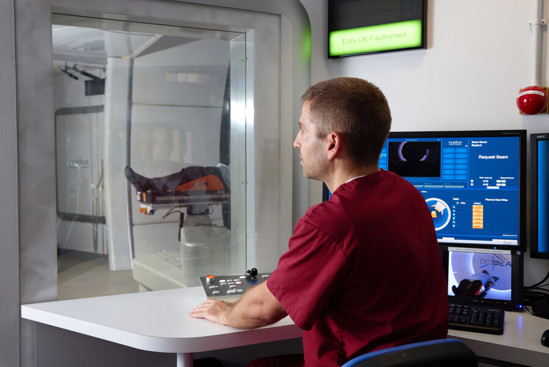
Behind the scenes
There are areas of the system that patients will not see.
Cyclotron Power Supply Room
This room is used for generating the Radio Frequency signal used as part of the operation of the cyclotron.
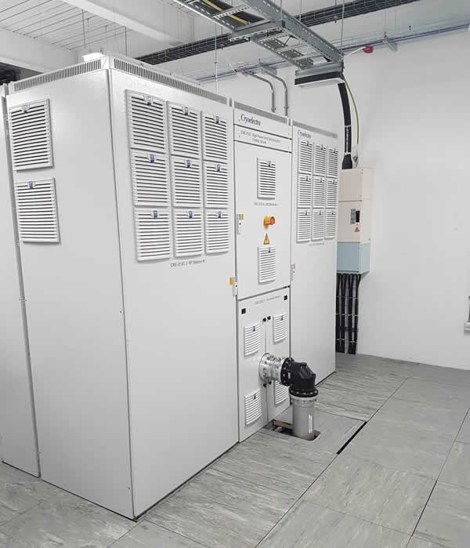
Magnet Power Supply Room
This is used to control and power all the magnets down the beam line and on the gantry structures.
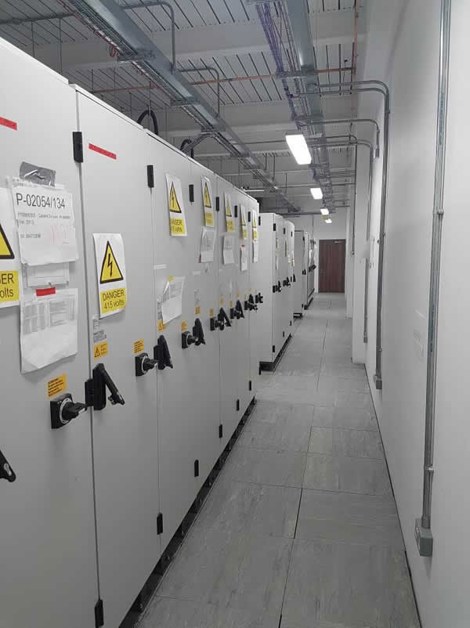
The main components of a treatment room are supplied by Varian medical systems.
The proton beam therapy centre at The Christie has three treatment gantries and will be working with University of Manchester on installing a fixed beam room for research.
